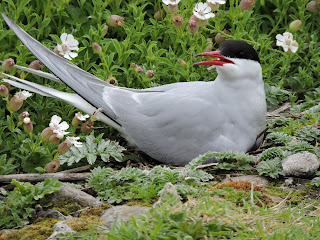As is my wont, I
rose early on the morning of the summer solstice to see the sunrise.
There isn't much true night at this time of year so, just after 4
a.m., I settled on the local hill overlooking the sea to watch the sun making its
appearance on the longest day. After several days of clear skies,
this one tended to be a bit overcast but I was treated to a display
of the brilliant reds and oranges of a sort of false dawn which
subsided to a pink band.
It was an odd phenomenon. Was this the
blue hour, l'heure bleu, when the sun is still below the
horizon, a time beloved of photographers for its unusual light?
The sunrise, when it
did occur, was almost a disappointment.
Having tipped my hat
in salute, I returned home for an early breakfast being surprised as
always by how many people are on the move even this early in the
day...milk, bread and newspaper deliveries, shift workers and maybe
some commuters hoping to beat the traffic and parking problems of the
city.
The rest of the day
was spent strimming the encroaching nettles at the beach hut and
watching the terns fishing in the bay.
After my encounter
with the Arctic terns on the Isle of May ( Blog 15/06/2017) I was happy to
observe them at a distance. These are Sandwich terns...I think.
They move so fast it's difficult to keep them in the lens view but
from their size, their whiteness and their cries, I reckoned they
were Sandwich terns.
They were diving for
the fish like miniature gannets rather than skimming and dipping like
their Arctic cousins. Arctic terns always remind me of children
ducking for Hallowe'en apples in the way they fish. Do children still
"dook for aipples" at Hallowe'en? Probably not.
As the sea swallows
dived for fish, the true swallows swooped along the shore catching
the sand flies. Two truly spectacular aerial acrobats and both long
distance migrants. They come back each year to gladden our hearts
and think nothing of it.





























